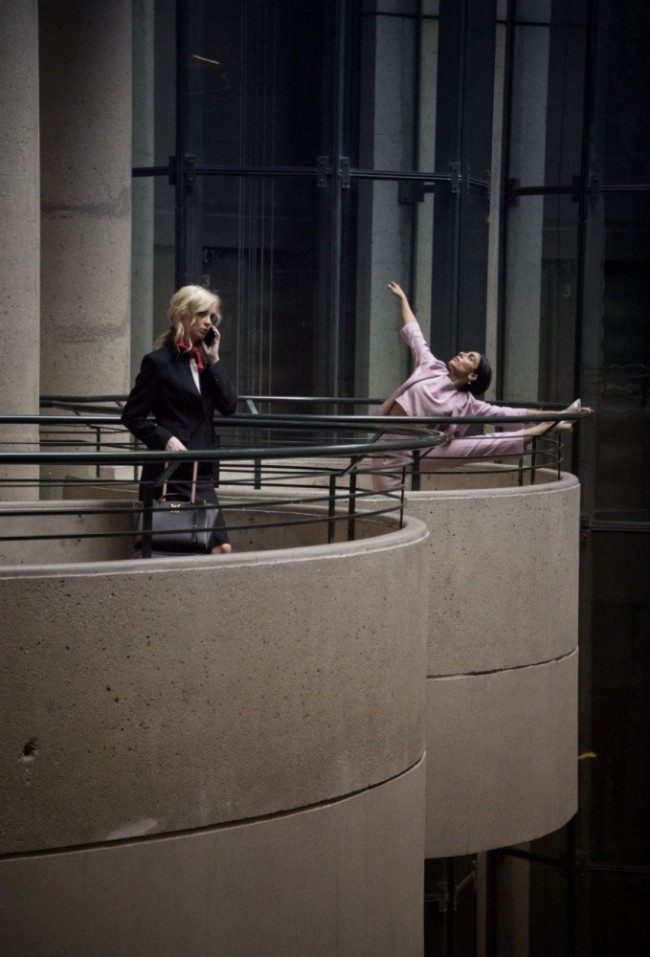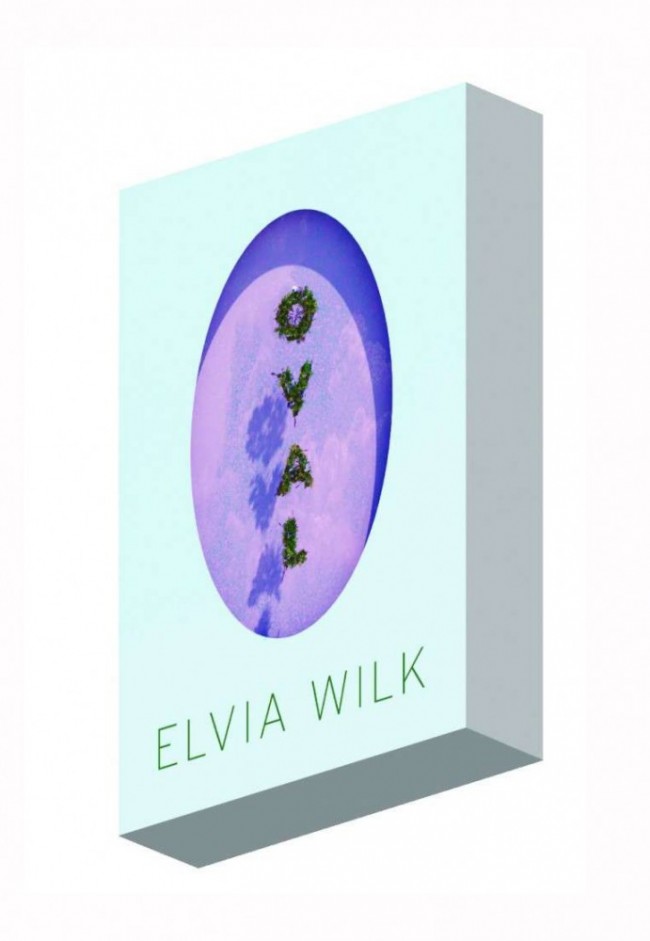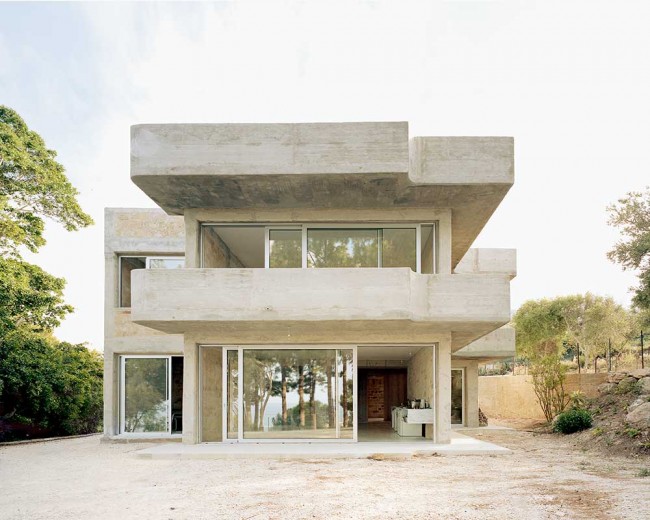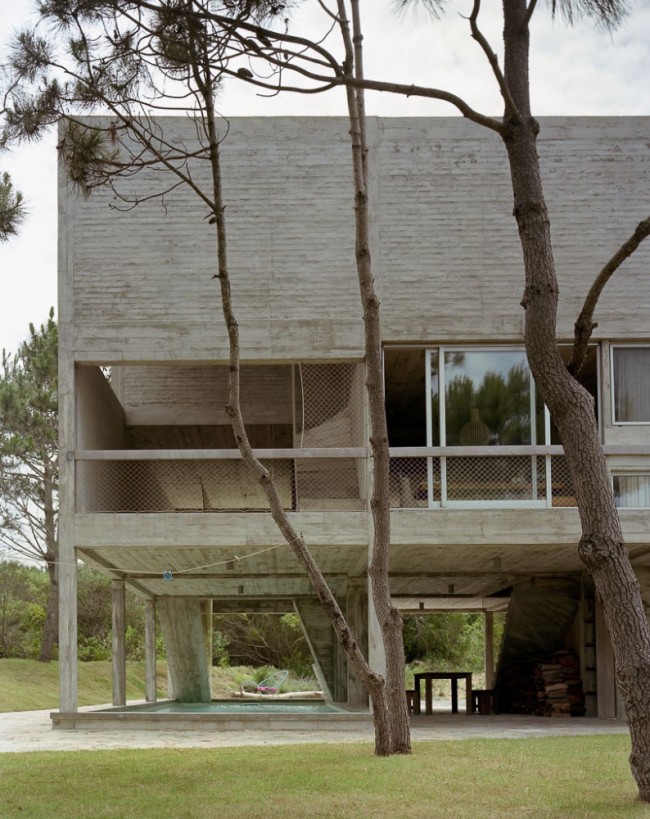A Treasure of Berlin Brutalism on the Brink of a Transhumanist Future
-

Exterior of Mäusebunker. Photography courtesy of Neue Langeweile.
-
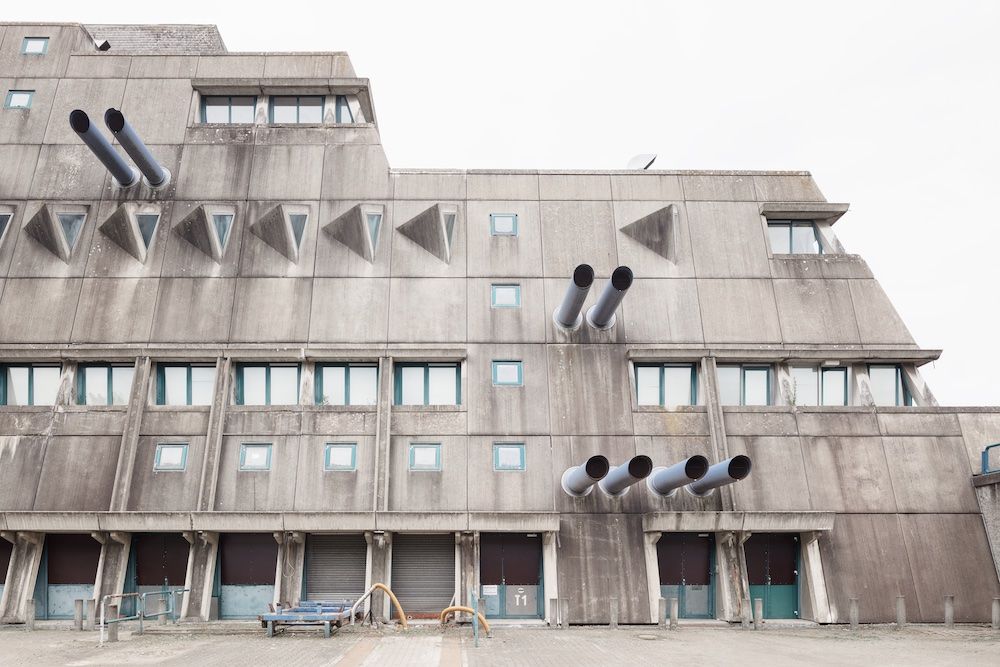
Exterior of Mäusebunker. Photography courtesy of Neue Langeweile.
A massive, concrete-clad building with a pyramid-like skeleton has been sitting vacant in the middle of Berlin for eleven years. Berliners affectionately refer to this former research facility for experimental medicine as Mäusebunker (which translates to “Mouse Bunker”), a nod to both its imposing, futuristic architecture and its thorny past: scientists bred and experimented on over 45,000 mice and 20,000 rats since it opened in 1981. Over the past couple of years, this former symbol of humanity’s unwavering belief in progress has become the unlikely axis of a transhumanist debate. If it’s not going to be destroyed, who has a right to the space? Humans, non-humans, or both?
German architect couple Gerd and Magdalena Hänska started designing Mäusebunker in the 1960s. Built next to the city’s hospital, it was part of a cybernetic complex where scientists could develop drugs and detect diseases by testing and experimenting on animals Berliners immediately protested. One environmentalist hurled a molotov cocktail.
Forty years later, techno-utopian dreams of progress are dreamt elsewhere, and medical experiments are relegated to a more inconspicuous building at the outskirts of Berlin. Like an enigmatic piece of space junk, the bunker sits in the residential western part of the city. A 280-thousand square feet structure left unused seemed absurd amidst rapidly expanding urban development, so the hospital directors decided to tear it down.
-
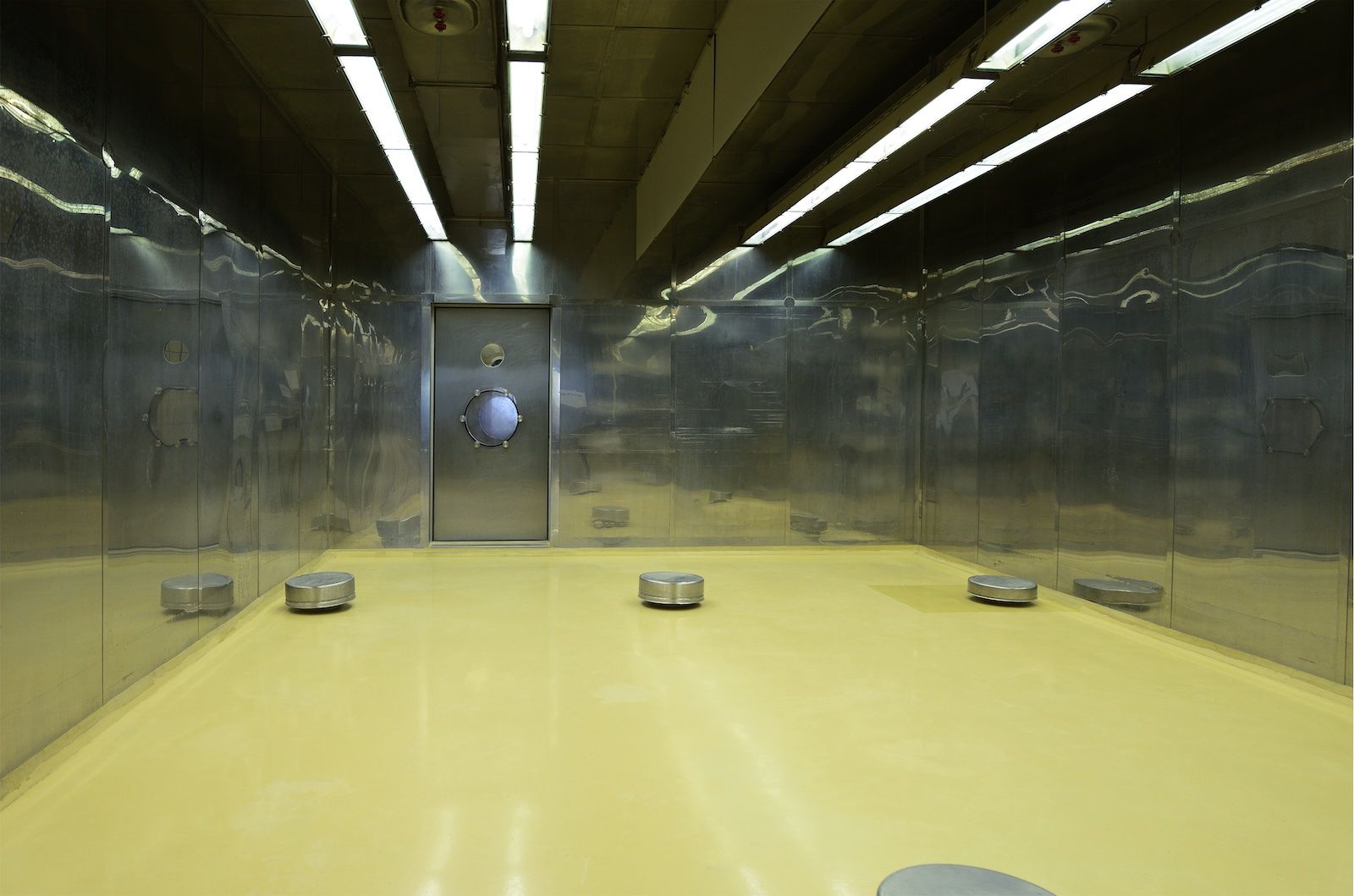
Interior of Mäusebunker. Photograph by Kay Fingerle.
-

Interior of Mäusebunker. Photograph by Kay Fingerle.
-

Interior of Mäusebunker. Photograph by Kay Fingerle.
-

Interior of Mäusebunker. Photograph by Kay Fingerle.
-
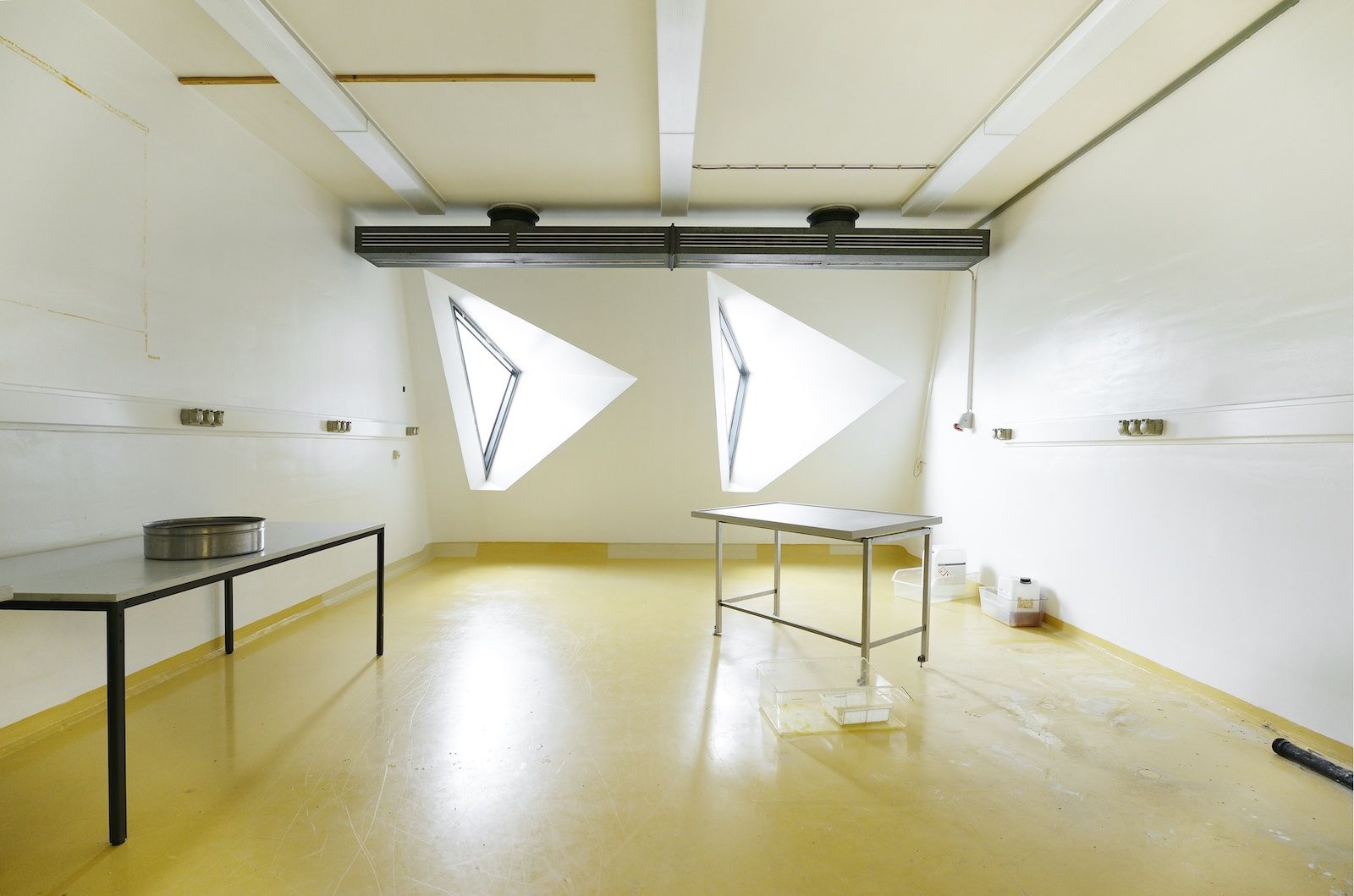
Interior of Mäusebunker. Photograph by Kay Fingerle.
Like many old buildings, Mäusebunker was contaminated with asbestos, which echoes the story of Palast der Republik, the former GDR parliament. Better to tear down than to renovate, and Berlin needed a new centre, ran the government’s claim in the 1990s, which seemed like an assertion of nationhood in the post-reunification era. The glassy socialist behemoth was in the way. Berlin’s senate decided to reconstruct the old Prussian palace, and history — cleansed of its socialist past — was reinvented to cater to imperial nostalgia and conservative sensibilities.
Decades later, a new awareness for the built heritage of post-war Europe arises. Consider the initiative #SOSBrutalism, an international documentary project started in 2015, which resulted in an exhibition and a book. The architect and conservationist Gunnar Klack collaborated with the art historian Felix Torkar once they heard that Mäusebunker was endangered. “The building is spectacular,” Torkar tells me over coffee. “Its sculptural quality evokes a reaction. You cannot walk past it and remain indifferent. It is a fantastic, large-scale sculpture,” he says. While its specific use dictated the design — hermetic separation of inside and outside — the architects created something beyond mere functionality. Klack and Torkar started a petition to save the edifice and get it listed as a cultural heritage site.
-
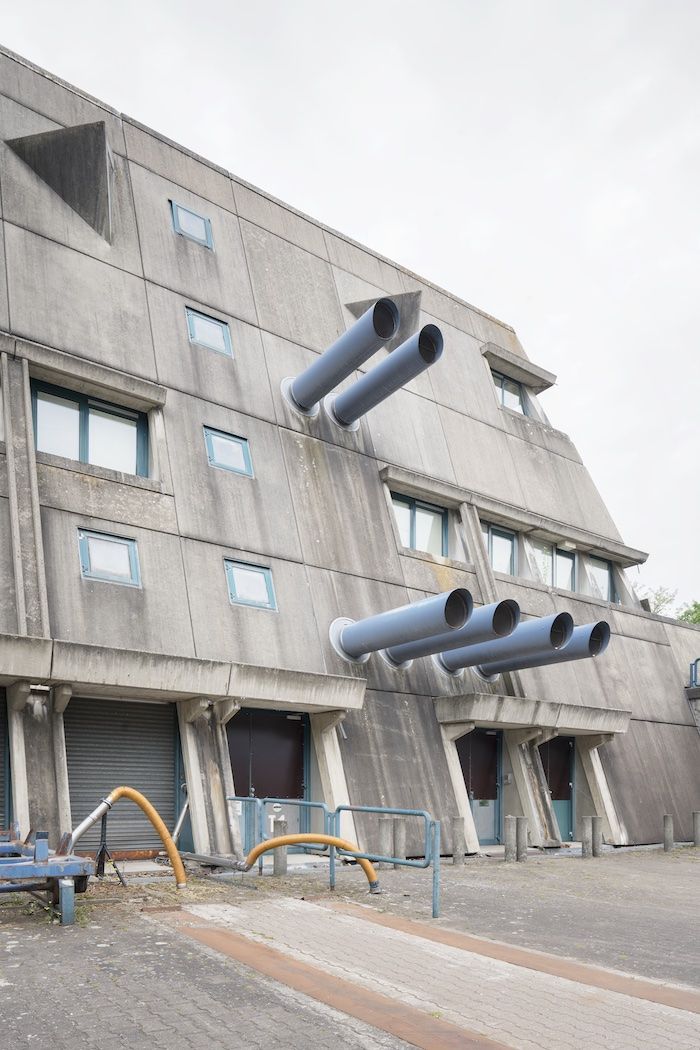
Exterior of Mäusebunker. Photography courtesy of Neue Langeweile.
-
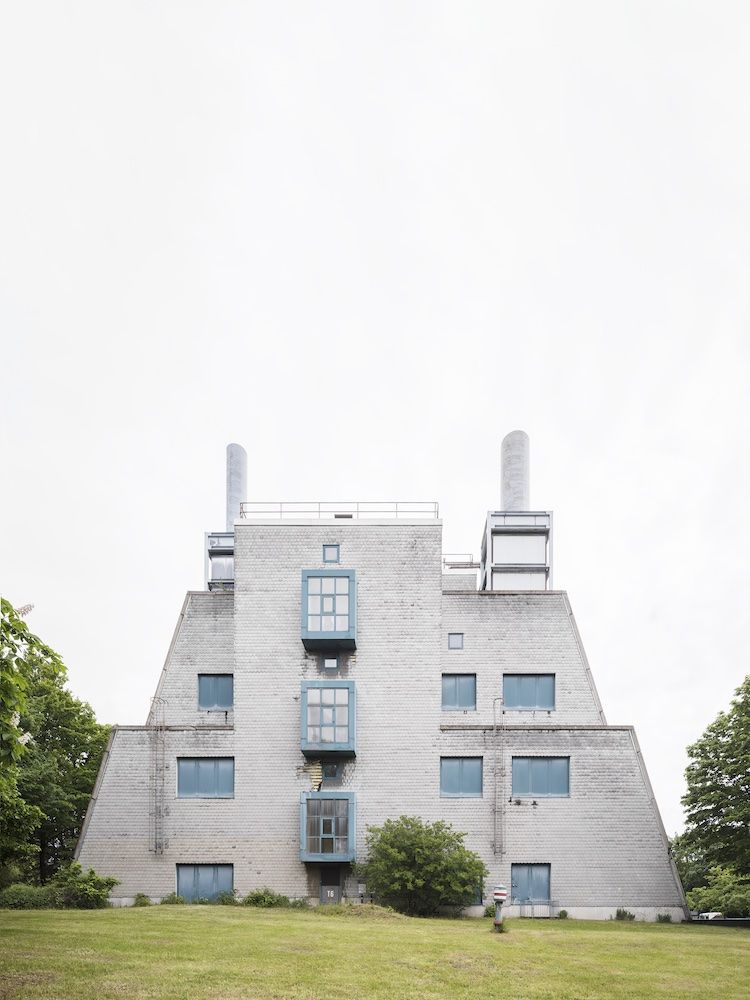
Exterior of Mäusebunker. Photography courtesy of Neue Langeweile.
The Charité, the Berlin medical science institution complex that houses the Brutalist gem, objected. The hospital president wanted it gone immediately, as did many politicians. Nothing will be listed, went the policy in notoriously cash-strapped Berlin, that cannot be reused. Then, in the early summer of 2020, Arno Brandlhuber stepped in with an art dealer at his side. They stated their willingness to buy and reuse it. Brandlhuber, who has made his name with austere designs based on reused ruins, sits with me in a low-ceilinged room at the top of an old industrial silo in East Berlin, where his architecture collective has recently moved. “This proves that further use is possible. Demolition is off the table,” says Brandlhuber on a clear December afternoon, visibly content with his Occam’s razor-like argument.
A polyphonic debate ensued, and it is still unclear who will own the structure. Nostalgia for a bygone utopia with inexhaustible natural resources serves as the backdrop, but other, new voices enter, some of them not human. It’s as if the task to make kin in a thick present — as theorist Donna Haraway calls a web of relations — is taken up in architecture.
Animals used to be exploited at Mäusebunker, and wouldn’t it make sense to include them in concepts of reuse? Every other floor is windowless, which once ensured stable temperatures and air pressure for the technology inside. Another purpose is hard to imagine. Why not leave them to bats and other critters, and create artists’ studios in the remaining parts, asks Brandlhuber and his collective. Why not view animals as the second client, and attempt to understand other species as cohabitants? Birds already occupy the place in flocks.
-

Exterior of Mäusebunker. Photography courtesy of Neue Langeweile.
-
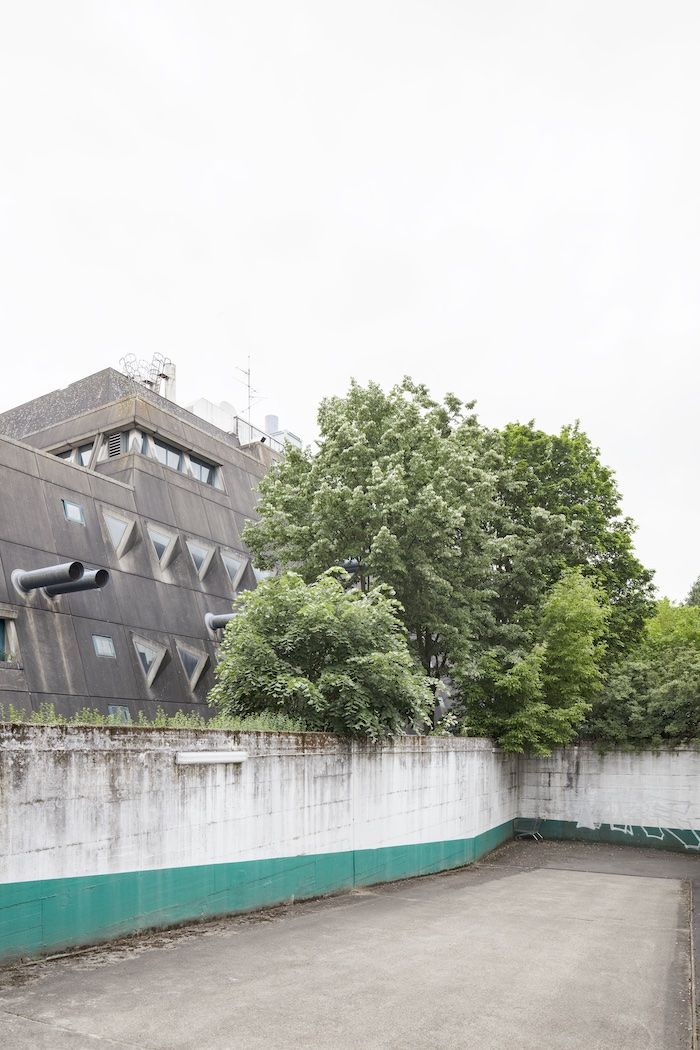
Exterior of Mäusebunker. Photography courtesy of Neue Langeweile.
Perhaps these ideas gained traction because the climate crisis and a global pandemic demonstrate how entwined human and non-human worlds are. Architects, however, would have to renounce control, give up predictability, and create hybrid spaces.
To create this transhumanist space, a fundamental tenet of architecture would have to be breached: the distinction between inside and outside. The all but outdated Mäusebunker hails from a time when the two were forcefully separated, and now it is the site for a change of narrative. This vision is refreshingly free from nostalgia. “The exploitation of animals has come to an end,” says Klack, “but they held out longer. They own the structure now.”
Text by Philipp Hindahl.
Interior photos shot by Kay Fingerle.
Exterior photos courtesy of Neue Langeweile.







